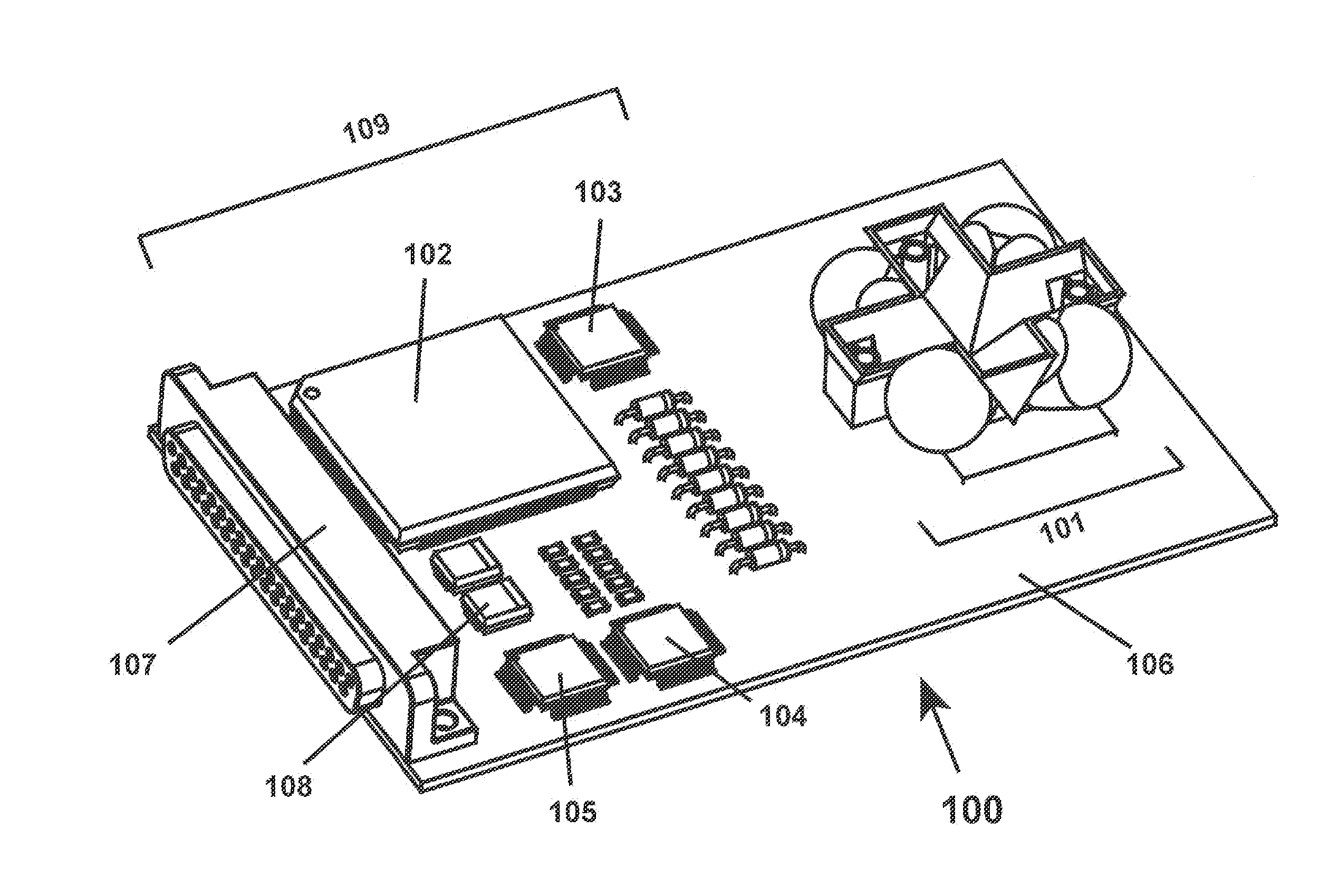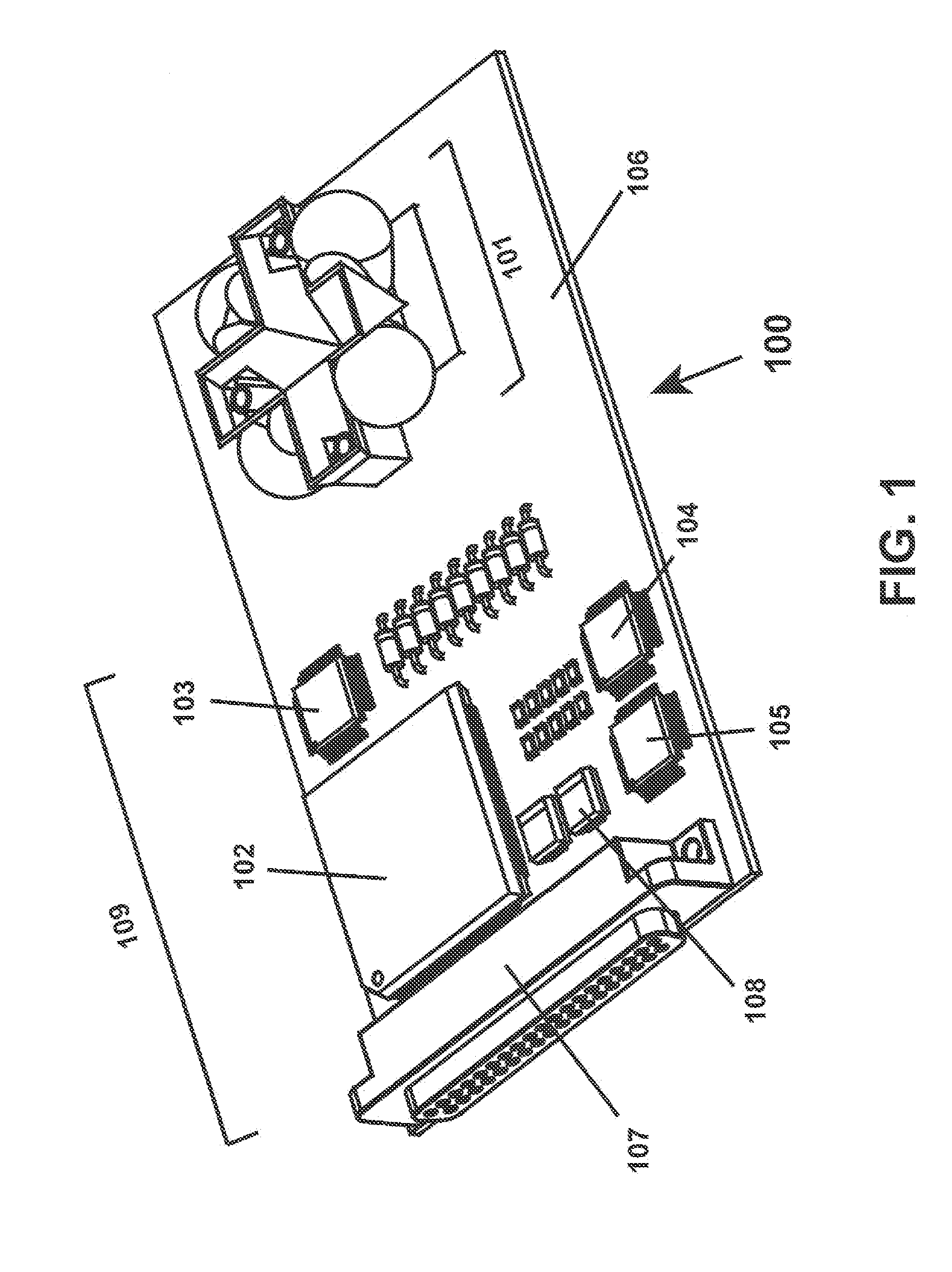Apparatus and Methods for Locating Source of and Analyzing Electromagnetic Radiation
a technology of electromagnetic radiation and antenna, which is applied in the direction of optical radiation measurement, radiation control devices, instruments, etc., can solve the problems of flight crew distraction, laser distraction of pilots, eye damage to flight crew,
- Summary
- Abstract
- Description
- Claims
- Application Information
AI Technical Summary
Benefits of technology
Problems solved by technology
Method used
Image
Examples
example 1
Exemplary Radiation Detector, Data Processing Components, and Radiation Detection and Measurements
[0078]The inventors constructed an embodiment of radiation detector 101 and associated data processing components. The detector has a field of view far greater than one hemisphere (>2 sr). That is, it is able to detect radiation arriving from across a field of view comprising over an entire hemisphere, with an almost-constant collection aperture over the entire solid angle. The detector gathers radiation and computes angle-of arrival and wavelength with an accuracy of ±1° and ±20 nm, respectively, over the near-ultraviolet, visible, and near-infrared spectrum. The data processing components include a real-time signal processor that provides computational full-frame-rate threat detection and source geolocation processing. This technology was developed for use on low-earth-orbit satellites, to provide information on source location in the event of ground-based laser illumination of a spac...
PUM
 Login to View More
Login to View More Abstract
Description
Claims
Application Information
 Login to View More
Login to View More - R&D
- Intellectual Property
- Life Sciences
- Materials
- Tech Scout
- Unparalleled Data Quality
- Higher Quality Content
- 60% Fewer Hallucinations
Browse by: Latest US Patents, China's latest patents, Technical Efficacy Thesaurus, Application Domain, Technology Topic, Popular Technical Reports.
© 2025 PatSnap. All rights reserved.Legal|Privacy policy|Modern Slavery Act Transparency Statement|Sitemap|About US| Contact US: help@patsnap.com



